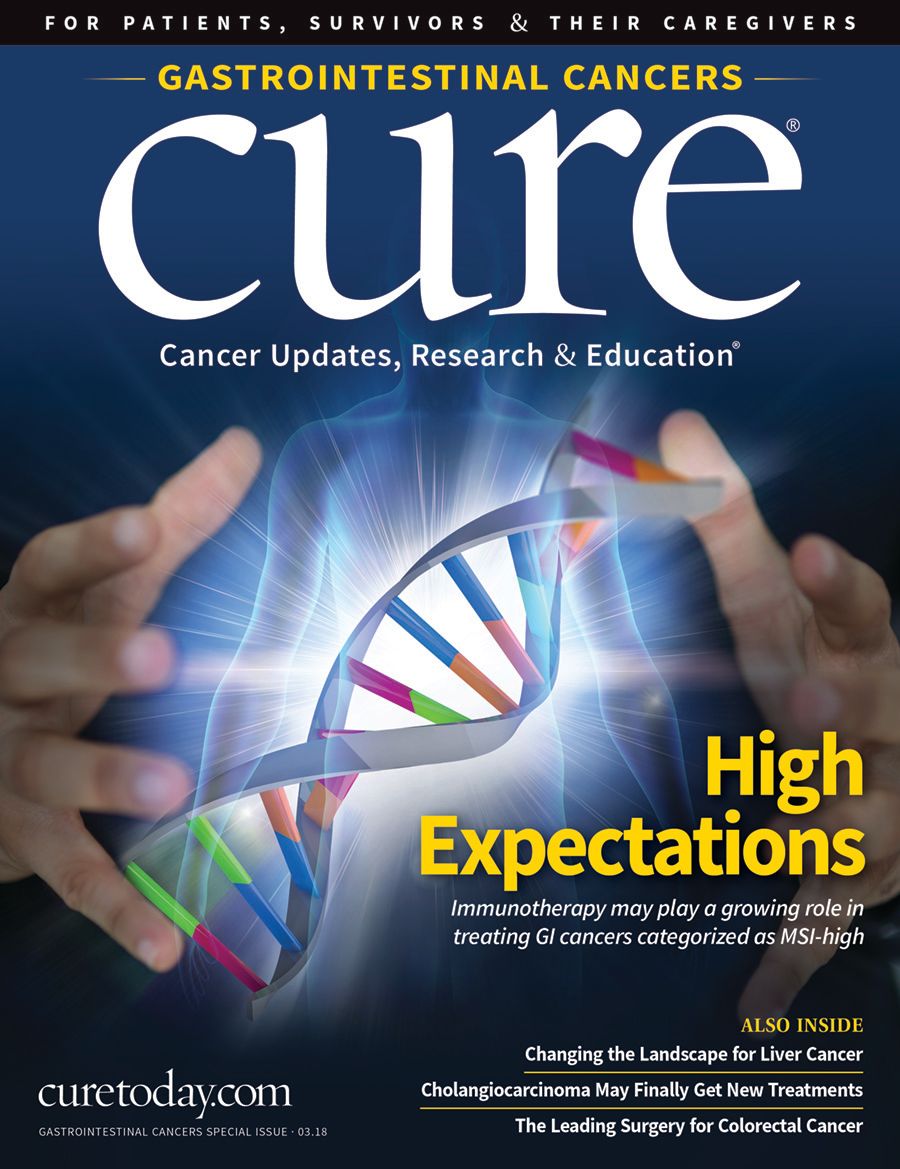On the Double: Improving Survival Rates in Pancreatic Cancer
A leader of the Pancreatic Cancer Action Network, which aims to double survival rates by 2020, outlines treatment strategies that could lead to success.
FOR 25 YEARS, LYNN Matrisian, Ph.D., M.B.A., was a leader in cancer biology research at the Vanderbilt University School of Medicine in Nashville, Tennessee. She also served as president of the American Association for Cancer Research and as special assistant to the director of the National Cancer Institute at the National Institutes of Health. Then, in 2011, Matrisian’s desire to make a more tangible impact on patients brought her to the Pancreatic Cancer Action Network (PanCAN), where she leads the advocacy group’s scientific and medical affairs teams.
In those roles, Matrisian is committed to helping PanCAN double pancreatic cancer survival by 2020. In an interview with OncLive®, a sister publication of CURE®, she described how the group pursues a combination of research, advocacy, patient support and community activity to achieve this goal.
She outlined several of PanCAN’s unique programs, including Know Your Tumor and Clinical Trial Finder. These initiatives use molecular analysis to identify the approximately 25 percent of patients with pancreatic cancer who have genetic alterations treatable with existing drugs, and then guide treatment on the basis of that knowledge. PanCAN’s newest initiative, Precision Promise, aims to improve outcomes through a patient-centric clinical trial and research platform that continuously and rapidly evaluates novel treatment options.
OncLive®: Why has there been such difficulty achieving clinical success with novel drugs in pancreatic cancer?
Matrisian: There are many different reasons, including the fact that it is diagnosed late, so most patients already have metastatic disease, or will soon. We are not good at curing metastatic disease in any cancer type. Another difficult feature is the stroma (the blood vessels and connective tissues supporting a tumor), which is unusually dense and fibrotic and has been shown to increase the tumor’s internal pressure and prevent chemotherapy drugs from getting to its cells. Molecularly, the KRAS gene is mutated 95 percent of the time — and, because it is an oncogene, its mutations can turn normal cells cancerous. But we don’t have a good drug to target this activity, and these mutations prevent some drugs that we do have from working effectively. Finally, it is an immunologically “cold” tumor type, and this has meant that it has not responded to immunotherapy like some other tumor types.
How is the landscape changing?
We have had some success in using chemotherapy before surgery, so more patients can have their tumor removed, giving them the best chance for long-term survival. We have had advancements in all the challenging areas I mentioned. A drug has been developed that disrupts the stroma and improves the effectiveness of chemotherapy: PEGPH20.
We’ve discovered that there are molecular alterations in about 25 percent of pancreatic tumors for which a drug exists that is targeted to that alteration, and there are some initial signs that these can be effective for those select patients. Lastly, there is a lot of research ongoing to find immunotherapies that can make a “cold” tumor “hot.”
What are the key pathways and cellular processes being targeted for pancreatic cancer therapy? Therapies are targeting the DNA damage repair pathway, which is often defective in pancreatic cancer, as well as stromal disruption and immunotherapy. In particular, these therapies are focused on the complex interactions between different cell types within the immune system.
In your opinion, what are the most promising current strategies?
I think all of the above are promising. We are particularly excited about targeting hyaluronic acid. PEGPH20 is in phase 3 trials right now, and the phase 2 trials looked good — although it’s the cancer cells themselves that started this whole process, the tumor conscripts neighbors and other cells, and that can drive a tumor to become more aggressive and metastatic and to grow faster.
Hyaluronic acid is part of that stromal response to the tumor. It’s one of the components in your joints that helps give you that ability to bounce back when you walk — that sponginess. But in a tumor, it blocks the blood vessels, and the tumor cells have to adapt in order to survive without having very many nutrients or much oxygen. Also, it keeps drugs designed to kill tumor cells from getting into the tumor.
PEGPH20 delivers the enzyme that breaks down hyaluronic acid in the tumor, which relieves the pressure of collapsed blood vessels and allows circulating drugs to get to the cells. What I really like about the early studies with this drug is that they asked if it worked for all patients or if you had to have a certain level of hyaluronic acid in your tumor before breaking down the acid makes a difference. It turns out that not 100 percent of tumors have a lot of hyaluronic acid. Others have stromal involvement but involving other proteins. I think the phase 2 results were very promising; it’s a molecularly driven approach, and patients are being selected on the basis of whether they are likely to respond.
What are the most significant challenges and hurdles to effective new treatments for pancreatic cancer?
The challenges include getting more patients with pancreatic cancer on clinical trials so we can test new approaches and see if they work, learning which patients are most likely to respond to what therapies, and getting all physicians across the United States to use best practices in treatment and supportive care so all patients get state-of-the-art care.
PanCAN’s Patient Central, Clinical Trial Finder and Know Your Tumor initiatives are designed to improve clinical trial enrollment. Patient Central, our Patient Registry and research publications contribute to education efforts. We coordinate efforts so that we can use the information from patients with pancreatic cancer most effectively and efficiently to figure out the best treatments for future patients.
